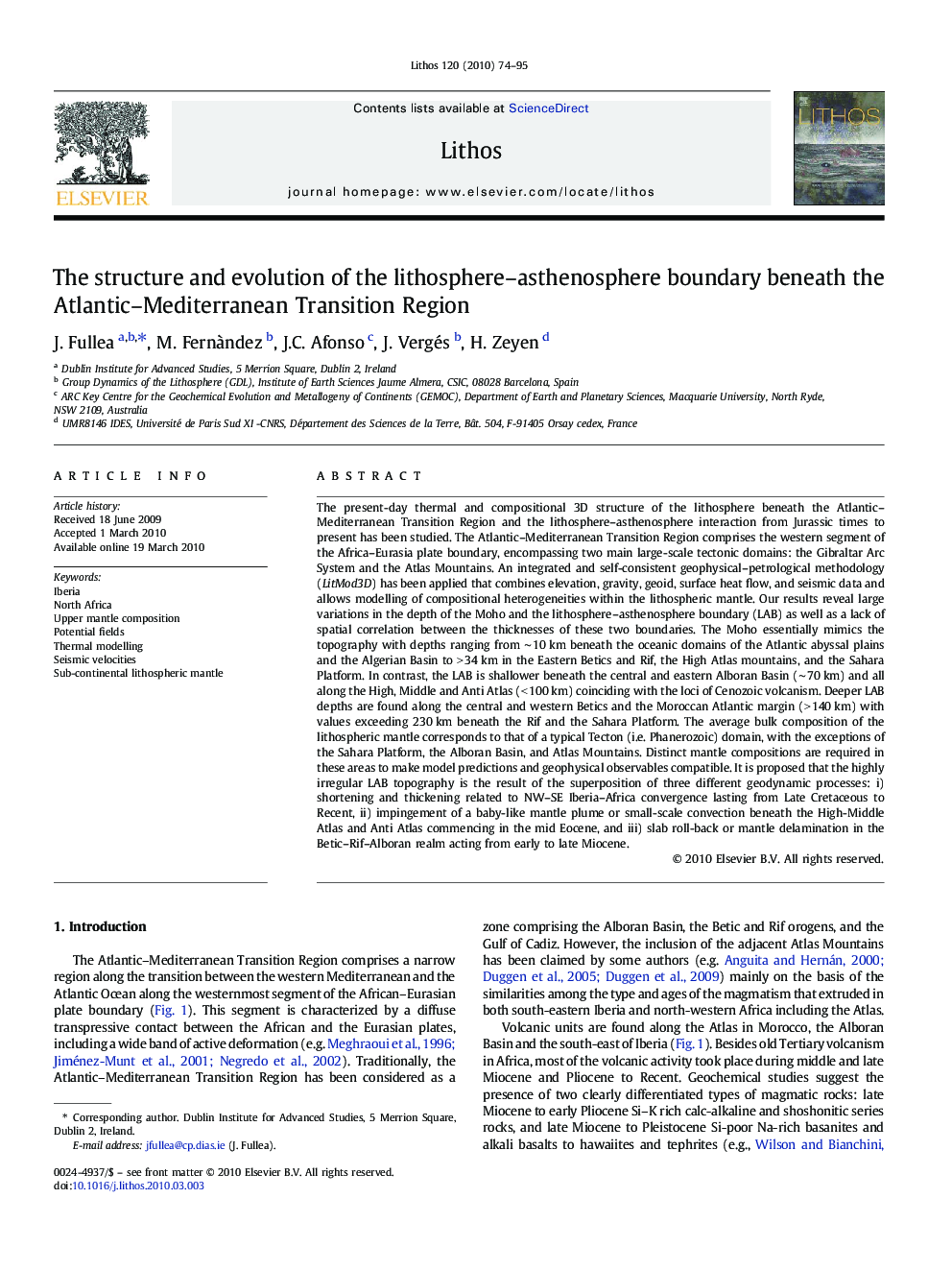| کد مقاله | کد نشریه | سال انتشار | مقاله انگلیسی | نسخه تمام متن |
|---|---|---|---|---|
| 4716812 | 1638727 | 2010 | 22 صفحه PDF | دانلود رایگان |

The present-day thermal and compositional 3D structure of the lithosphere beneath the Atlantic–Mediterranean Transition Region and the lithosphere–asthenosphere interaction from Jurassic times to present has been studied. The Atlantic–Mediterranean Transition Region comprises the western segment of the Africa–Eurasia plate boundary, encompassing two main large-scale tectonic domains: the Gibraltar Arc System and the Atlas Mountains. An integrated and self-consistent geophysical–petrological methodology (LitMod3D) has been applied that combines elevation, gravity, geoid, surface heat flow, and seismic data and allows modelling of compositional heterogeneities within the lithospheric mantle. Our results reveal large variations in the depth of the Moho and the lithosphere–asthenosphere boundary (LAB) as well as a lack of spatial correlation between the thicknesses of these two boundaries. The Moho essentially mimics the topography with depths ranging from ∼ 10 km beneath the oceanic domains of the Atlantic abyssal plains and the Algerian Basin to > 34 km in the Eastern Betics and Rif, the High Atlas mountains, and the Sahara Platform. In contrast, the LAB is shallower beneath the central and eastern Alboran Basin (∼ 70 km) and all along the High, Middle and Anti Atlas (< 100 km) coinciding with the loci of Cenozoic volcanism. Deeper LAB depths are found along the central and western Betics and the Moroccan Atlantic margin (> 140 km) with values exceeding 230 km beneath the Rif and the Sahara Platform. The average bulk composition of the lithospheric mantle corresponds to that of a typical Tecton (i.e. Phanerozoic) domain, with the exceptions of the Sahara Platform, the Alboran Basin, and Atlas Mountains. Distinct mantle compositions are required in these areas to make model predictions and geophysical observables compatible. It is proposed that the highly irregular LAB topography is the result of the superposition of three different geodynamic processes: i) shortening and thickening related to NW–SE Iberia–Africa convergence lasting from Late Cretaceous to Recent, ii) impingement of a baby-like mantle plume or small-scale convection beneath the High-Middle Atlas and Anti Atlas commencing in the mid Eocene, and iii) slab roll-back or mantle delamination in the Betic–Rif–Alboran realm acting from early to late Miocene.
Journal: Lithos - Volume 120, Issues 1–2, November 2010, Pages 74–95